Vertical multiplication is a method used to multiply numbers by aligning them vertically, with one number on top of the other. This layout makes it easier to multiply digits step by step, especially when dealing with multi-digit numbers.
Vertical Multiplication
Vertical Multiplication
Steps for Vertical Multiplication:
Solving Vertical Multiplication is easy when following these steps:
1. Write the Numbers Vertically Properly:
Place the larger number on top and the smaller number below it, aligning the digits by their place values (ones under ones, tens under tens, etc.) .

2. Multiply Each Digit Systematically:
Start by multiplying the bottom number’s rightmost digit (ones place) with each digit of the top number, working from right to left. Write the results below, ensuring they are aligned properly.
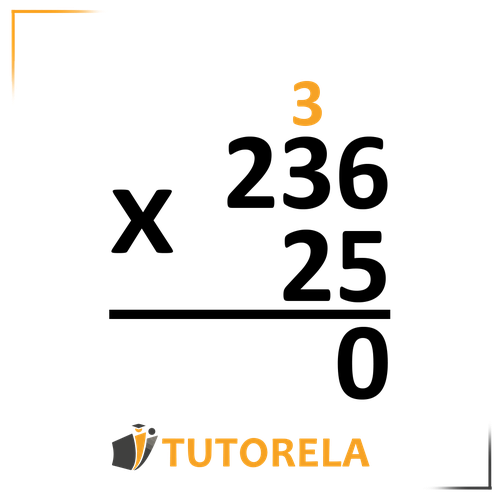
3. Add the Carry:
If the product of two digits exceeds 9, write down the ones place and carry the tens place to the next column.
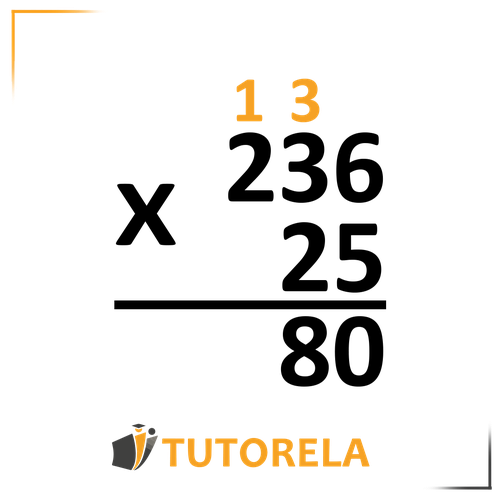
4. Shift for Place Value:
When moving to the next digit of the bottom number, shift the results one place to the left (to account for place value).
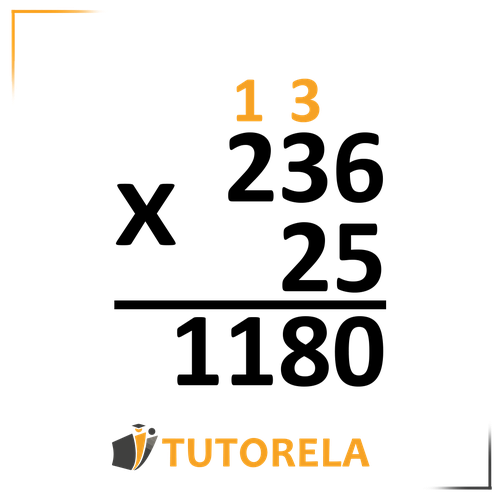
5. Add the Results:
After multiplying with all digits of the bottom number, add the rows of partial products to find the final result.
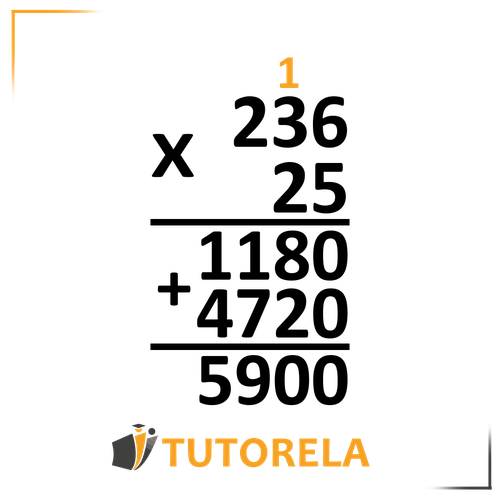
Important rules to keep in mind
Learn the multiplication tables thoroughly and follow these rules:
First rule
Write down the exercise correctly:
The ones under the ones, the tens under the tens, and the hundreds under the hundreds.
The number with more digits will be written above the one with fewer digits.
Second rule
When the product is greater than it is stored at the top left and must be remembered to add it to the next result.
Third rule
Before moving on to multiply the next digit, the "numbers stored" at the top left must be erased to avoid confusion.
Fourth rule
We will add a below the result to indicate that we have moved to the next digit, each row of results will start one place to the left in relation to the previous row.
Test yourself on vertical multiplication!
Vertical Multiplication
Vertical multiplication is a method used to multiply numbers by aligning them vertically, with one number on top of the other. This layout takes advantage of our place value system, making it easier to multiply digits systematically and keep track of partial products, especially when dealing with multi-digit numbers. This method is particularly useful when mental math becomes difficult or when you need to show your work clearly.
Why Vertical Multiplication Works
Vertical multiplication works because it systematically applies the distributive property while maintaining proper place values. When we multiply 23 × 45, we're actually calculating (20 + 3) × (40 + 5), which expands to multiple smaller multiplications that are easier to manage when organized vertically.
First rule
Correct notation: Ones under ones, tens under tens, and hundreds under hundreds.
- Write the larger number (more digits) on top
- The smaller number goes below, aligned to the right
- This ensures each digit is in its correct place value position
Why this works: Place value is the foundation of our number system. Proper alignment ensures we multiply and add values correctly.
Let's see an example:
Observe the exercise
To convert it into a vertical multiplication, we must write the numbers one under the other, ensuring that the ones are under the ones, the tens under the tens, and the hundreds under the hundreds.
Moreover, the longer number, the one that contains more digits, should be written at the top.
Solution:
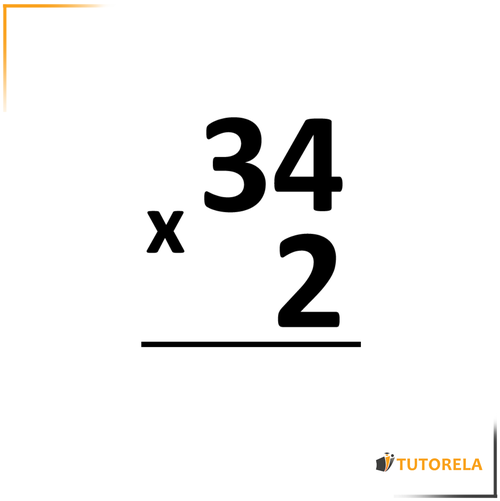
Now we will multiply the ones digit by the ones digit . We will write the result and continue.
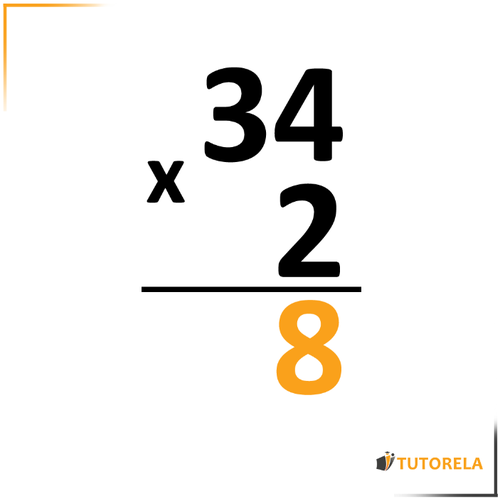
Now we will multiply the ones digit by the tens digit and write the result as follows:
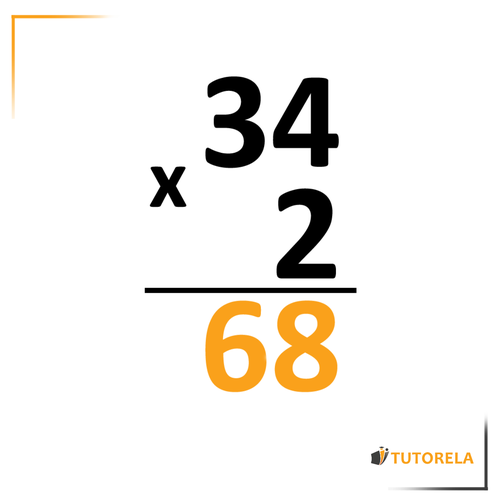
Second rule
When the result is greater than it is stored at the top left and must be remembered to add it to the next result. In the result row, only the ones digit is noted.
Let's move on to a more complex exercise.
Solution:
Let's write it in vertical form:
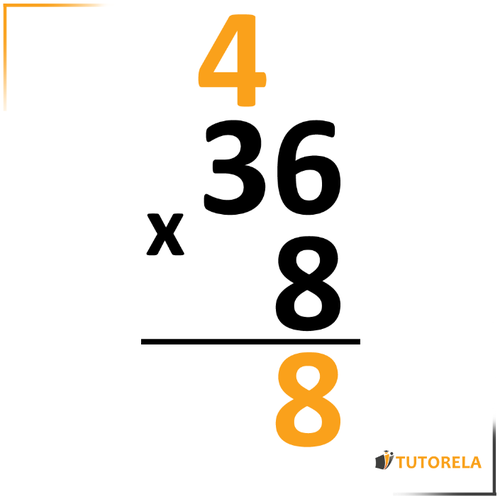
Let's multiply the ones digit
by the ones digit
We will get
is greater than .
Therefore, we will apply the second rule and note in the result row only the ones digit .
The will be written at the top left and remembered to add it to the result of the next multiplication.
We store it above the .
Now let's multiply the ones digit by the tens digit and let's not forget to add to the result.
We will note .
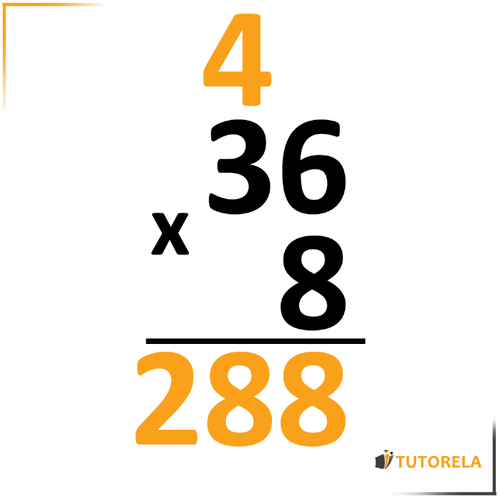
Third rule
Erase "the carried numbers" at the top left before moving on to multiply the next digit, this prevents confusion.
Fourth rule
Add below the result to indicate that you move to the next digit, each row of results starts one place to the left in relation to the previous row.
Now we will see the multiplication of a two-digit number by another two or three-digit number, so we can apply the third and fourth rules.
Observe the exercise:
Solution:
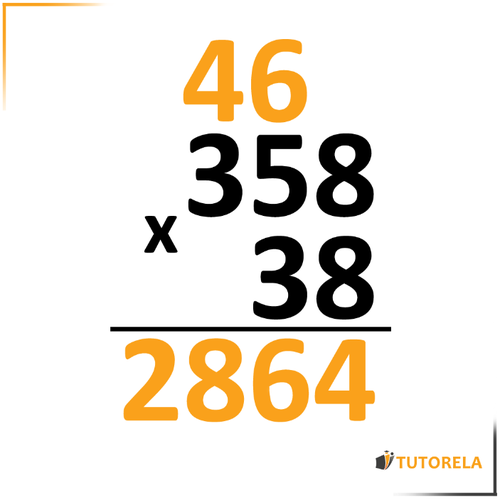
Let's write it in vertical form according to rule .
Multiply the ones digit ,
by each of the digits according to rule .
Now, according to rule let's erase the "carried numbers" on the top left to avoid confusion.
Furthermore, according to rule we will add below the answer to indicate that we have moved to the next digit and we will start writing the row of results one step to the left from the previous row.
That is:
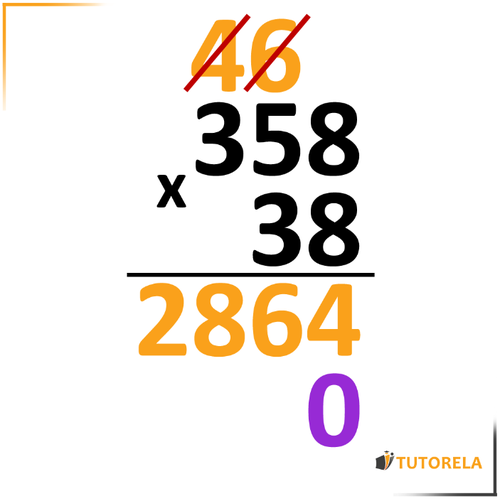
After erasing and moving one step to the left, we can move to the tens digit and continue multiplying it with the ones, tens, and hundreds, just as we have done so far.
Notice that, the result will be written to the left of the we added in the following way:
Make sure to write the digits correctly, each digit below the corresponding one.
We will keep the and continue.
We will keep the and continue.
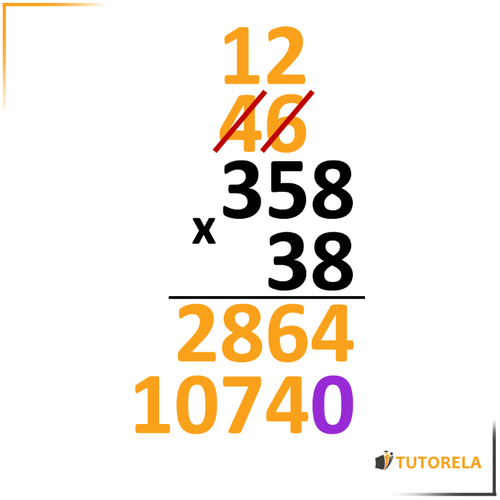
At this point, all we have left to do is, add all the solutions obtained, in the same way we solve a common addition exercise in vertical form.
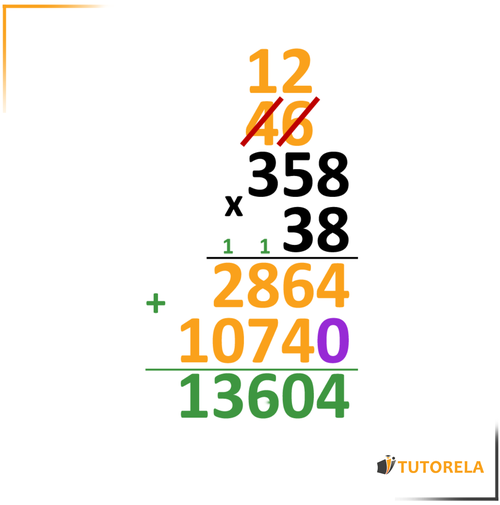
Attention: if it were a multiplication of a three-digit number by another three-digit number, when moving to the third digit, we should reserve another place with the . That is, places and then the answer would be written steps to the left.
Common Mistakes to Avoid
Misalignment: Always check that digits are in correct columns
- Forgotten Carries: Double-check that carries are added correctly
- Place Value Errors: Remember to shift left for each new digit of the multiplier
- Addition Errors: Carefully add partial products at the end
Checking Your Answer
- Estimation: Round numbers and check if your answer is reasonable
- Reverse Check: Use division to verify (13,604 ÷ 38 should equal 358)
- Digital Root: Advanced students can use digital root checking
Examples with solutions for Vertical Multiplication
Exercise #1
Video Solution
Step-by-Step Solution
To solve this problem, we'll follow these steps:
- Step 1: Multiply the unit digits.
- Step 2: Multiply the tens digits.
- Step 3: Add the results from Steps 1 and 2.
Let's execute these steps:
Step 1: Multiply the unit digit of 53, which is 3, by 3:
.
Step 2: Multiply the tens digit of 53, which is 5 (standing for 50), by 3:
.
Step 3: Add the results of Step 1 and Step 2:
.
Therefore, the solution to the problem is .
Answer
Exercise #2
Video Solution
Step-by-Step Solution
To solve this problem, we'll employ vertical multiplication.
Step 1: Set up the multiplication:
×
---------
Step 2: Multiply each digit of 62 by 4. We start with the ones place, then the tens place.
- Multiply the ones digit: .
- Multiply the tens digit: .
Step 3: Consider the place value for each part of the calculation:
The result from multiplying the tens digit by 4 represents because it is .
Step 4: Add the two partial results:
8
+ 240
---------
248
Therefore, the solution to the problem is .
Answer
Exercise #3
Video Solution
Step-by-Step Solution
We will solve the problem using direct multiplication of the two numbers, 30 and 4.
Steps:
First, multiply the one's place of 30 by 4:
Second, multiply the ten's place of 30 by 4:
The result from the tens multiplication is over the magnitude of the number 30 (since it's in the tens place), so we already account for place by multiplying 3 by 4 directly forming a product 12, no tens digit carries from one's digit.
Combine these results to get the total product:
Therefore, the product of and is .
By referencing the multiple-choice options provided, the correct choice matches the calculation we performed and is choice 3: .
Answer
Exercise #4
Video Solution
Step-by-Step Solution
To solve this problem, we'll perform vertical multiplication of by :
- Step 1: Multiply the ones place. Multiply (from 82) by :
This gives us in the ones place.
- Step 2: Multiply the tens place. Multiply (in the tens place of 82) by :
Since the result is , we place in the tens place and carry over to the next higher place (hundreds place).
- Step 3: Add up the intermediate results.
The ones place has , and the tens place has plus (carry-over), totaling to in the tens place. Thus, the full number now reads:
Therefore, the solution to the problem is .
Answer
Exercise #5
Video Solution
Step-by-Step Solution
To solve this problem, we will multiply by using standard multiplication techniques:
- Step 1: Multiply the unit digit of by :
. - Step 2: Multiply the tens digit of by :
. - Step 3: Place the result of correctly one digit to the left (because it's actually ), which gives .
- Step 4: Add the results from Step 1 and Step 3:
.
Therefore, the product of is .
Answer
More Questions
Vertical Multiplication
- Mathematical Optimization: Identifying the Exercise with Maximum Result
- Maximum Value Comparison: Selecting the Highest-Result Exercise
- Vertical Multiplication: 631 × 316 =
- Calculate the Product: Finding Total Gifts When Wrapping 9 Daily for 23 Days
- Calculate Gift Wrapping Rate: 7 Gifts/Hour × 20 Hours Problem
- Long Division
- Estimation for Fifth Grade
- Prime Numbers and Composite Numbers
- Divisibility Rules for 3, 6, and 9
- Average for Fifth Grade
- Fractions
- A fraction as a divisor
- How do you simplify fractions?
- Simplification and Expansion of Simple Fractions
- Common denominator
- Hundredths and Thousandths
- Part of a quantity
- Placing Fractions on the Number Line
- Numerator
- Denominator
- Decimal Fractions
- What is a Decimal Number?
- Reducing and Expanding Decimal Numbers
- Addition and Subtraction of Decimal Numbers
- Comparison of Decimal Numbers
- Converting Decimals to Fractions
- Remainder of a fraction
- Decimal fraction remainder
- Remainders









